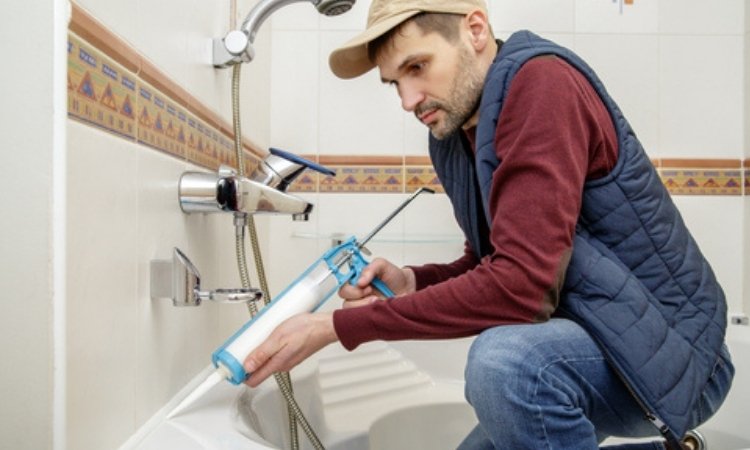When you have the caulk applied in your bathroom near the bathtub, sinks, and on the tiles, it seals the joints and keeps the water from leaking. However, due to frequent use, it could get worn out, which may decrease its effectiveness. But when to recaulk your bathroom in Singapore and apply new caulk?
We’ll tell you how you can identify the best time to recaulk your bathroom so that you can do it at the right time without doing it when it’s not needed. Stay around until the end of this post. Also, PS Home Maintenance Singapore expert in toilet bowl replacement, vinyl flooring, and water tap\ Faucet replacement services in Singapore.
Benefits Of Recaulking Your Bathroom In Singapore
There are many benefits of recaulking your bathroom in Singapore, which include:
- Avoids costly water damage down the road
- Makes your bathroom look newer and well-kept
- Gives better protection in Singapore’s humid climate
- Saves you money on bigger repairs later
- Helps keep tiles and fixtures firmly in place
- Cuts down on bad smells from hidden mold or leaks
- Boosts your home’s value with simple upkeep
When to Recaulk Your Bathroom in Singapore?
It’s crucial to recaulk your bathroom in Singapore when it’s needed the most. If you do it without the need, you’ll waste money on buying new caulk. These are the signs of when to recaulk your bathroom.
The Caulk Is Cracking or Peeling
Is the caulk around your sink or the shower looking crooked, damaged, or peeling off? That’s a clear sign you should recaulk your bathroom, as it’s too old and can’t hold up any longer.
Peeling is even worse because the caulk is basically falling apart.
If you spot this, you should not wait. Just strip it off and get new caulk on before water messes up your walls.
Mold or Mildew Keeps Coming Back
You scrub and clean, but those ugly black spots come crawling back every time. That is because your old caulk has probably given up on keeping moisture out.
Mold loves hanging around damp spots, and once it gets behind the caulk, cleaning does nothing.
You will keep fighting a losing battle until you pull off the old stuff and seal it up fresh. Better to do it now before your bathroom starts smelling like a wet sock.
You Notice Gaps Between the Caulk and the Surface
Ever see little spaces between the caulk and the wall or sink? That is not just bad luck. Old caulk shrinks or pulls away over time, leaving tiny gaps behind. Those gaps are like welcome signs for water to sneak in.
And once water gets in, you are looking at a whole lot of problems behind the walls. If you notice this, better not leave it hanging around.
Water Starts Pooling or Leaking Around Fixtures
Water hanging around the edges of your sink or shower is not just annoying; it means the caulk is failing. It should keep water out, not let it sit around like it is on vacation.
If you leave it, that water will slide behind your walls or under the tiles before you even know it. It is one of those small problems that blow up into a big one if you let it slide.
The Caulk Is Cracking or Peeling
Cracked or peeling caulk is your bathroom’s way of waving a white flag. The moment you see lines splitting or pieces curling up, you can bet water is already sneaking through. It is only a matter of time before that turns into a leak or some nasty mold problem.
You do not have to be a pro to fix it, just scrape it off and lay down a new bead before things get worse.
Final Words
Recaulking your bathroom can help stop the water from leaking out of your bathroom. However, you need to do it at the right time when your bathroom needs it the most.
This is to make sure you’re not spending money on buying caulk when your bathroom doesn’t need it.
So, when to recaulk your bathroom in Singapore? Check the caulk for cracks or peeling, and remove the old caulk with a scraper when you see damage.
Clean the surface well with soap and water, let it dry fully before you start sealing. Apply fresh caulk evenly along the gaps, smooth it out with your finger or a tool for a neat finish. Leave it to dry as per the instructions, keep the area dry during this time to let it set right.


